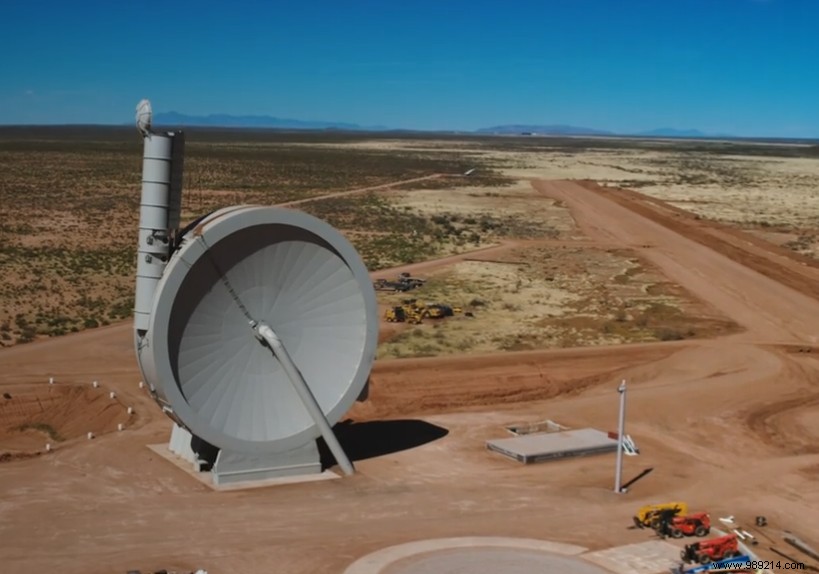An American company had already made headlines some time ago for communicating its objective of sending objects into space using of a giant catapult. Recently, first successful tests have taken place for a first prototype on a reduced scale.
In 2014, the start-up SpinLauch emerged after being founded in secret by entrepreneur Jonathan Laney. Its goal ? Cut the costs of space launches to $500,000 , whereas it is usually a question of several tens of millions. In 2018, SpinLauch was already communicating about its curious concept of a giant centrifuge (or catapult), allowing in theory to send payloads into space . In an article from November 9, 2021, the CNBC channel claims that SpinLauch has conducted the first tests of its catapult.
These tests took place in the desert of New Mexico (USA). However, it is a one-third scale model which is fifty meters in diameter. The catapult sent a projectile three meters long at a speed of several thousand km/h. However, this speed seems to have been sufficient to reach the suborbital level. Nevertheless, Jonathan Laney said that the test was carried out with only 20% of the maximum capacity of the machine in terms of speed.

Until today, SpinLauch had finally communicated relatively little about its project, perhaps for fear of failing. However, the trials are a success and according to Jonathan Laney, 90% of the risks have already been eliminated . Thus, the catapult would be almost operational while waiting for the full-size version. In addition, the start-up plans around thirty suborbital tests by the summer of 2022 before moving on to real orbital launches.
The main objective of SpinLauch is to come and compete with space rockets within the framework of the sending of small satellites in space (up to 180 kg). However, the mass of rockets is mainly composed of fuel. Thus, the catapult could make it possible to reduce this mass at takeoff and thus save money while freeing up space to carry real payloads.
Based on the acceleration of the projectile, the system requires less hydrogen and oxygen . According to the first results, the catapult would use four times less fuel, which would make it possible to divide by ten the launch costs . The US military has already expressed interest in sending military mini-satellites and other missiles into space.